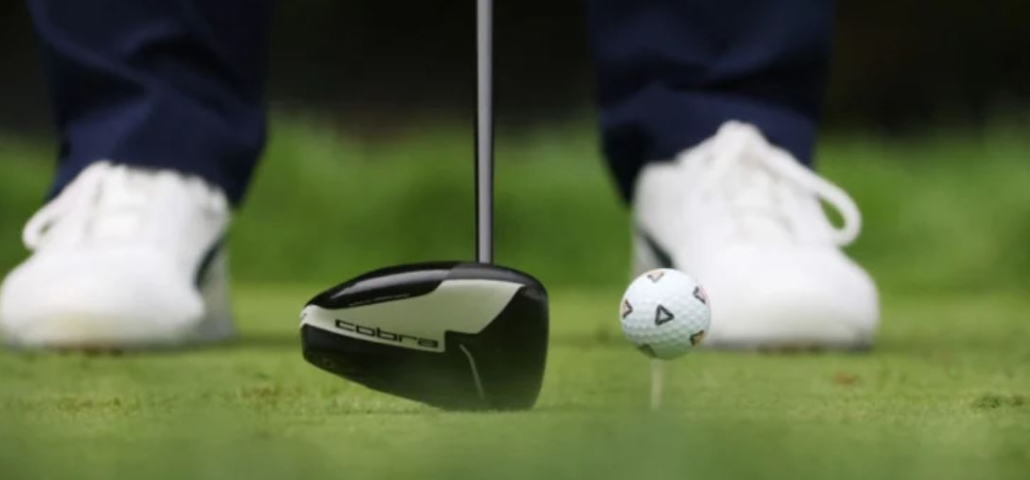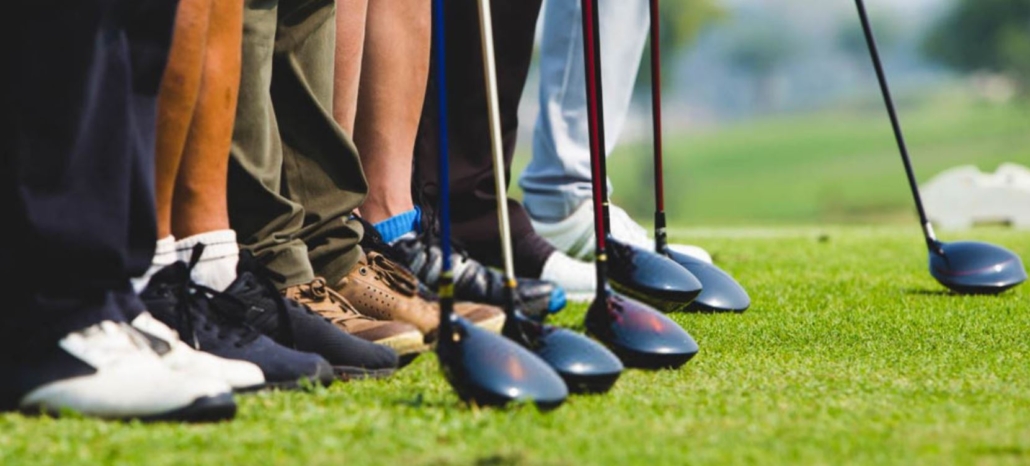Heavy Vs Light Driver Shafts – How To Pick A Driver Weight To Suit Your Game

Think about the shaft being the engine of the golf club. Over the past 20 years the technology in golf shafts has skyrocketed. The introduction of graphite shafts changed the game forever.
Shafts were made lighter to create more speed, while still being strong enough for the stronger and faster hitters to have enough control. Graphite is much more versatile compared to steel, shaft manufactures are able to add different materials to help launch, control, speed and forgiveness.
Picking the right shaft weight is incredibly important, it can affect so many different things in the swing and shot shape. In this article we will dive into all the details and questions you will have.
How Important Is The Weight Of Your Driver

Having the correct weight in your driver shaft could be the difference from you bombing one down the middle or slicing one into the bush.
To some it might not sound that important, but it really is. Our rule of thumb is you need a Driver shaft to be as heavy as it can be, until your clubhead speed starts to slow down.
Going with this approach will allow you to pick a Driver shaft that is light enough to generate lots of speed, but in turn heavy enough to have control.
When you go too light your speed will be up, but you will lose control, when the shaft is too heavy you will have lots of control but lose distance, because your clubhead speed will drop.
You never want to manipulate your swing to match the golf club, you always want to swing as freely as you can. When the golf shaft is too light or too heavy, you will have to manipulate your swing to hit it well. This will obviously cause inconsistencies in your swing, and even worse cause bad habits.
How To Know Whether You Will Need Heavier Or Lighter Driver Shaft

Choosing the right weight for your driver shaft can become quite tricky, the main aspect that will determine your shaft weight will be clubhead speed.
The faster you swing the club generally the heavier the shaft will be, and then in turn the slower you swing it the lighter the shaft will be. Have a look at your swing speed vs shaft weight table below.
Age can also play a part, the older you get the more you can benefit from a lighter shaft, this will increase swing speed, which will increase distance.
Your shot shape can be directly impacted by the weight of the shaft too. If you are struggling with a slice, going with a lighter shaft can help the clubhead square up, making the shot come out straighter.
The opposite goes for if you are hooking the ball, going with a heavier shaft can delay the clubhead at impact, preventing the clubhead from closing.
A very simple thing is if the Driver feels too heavy, go with a lighter shaft, and if it feels too light go with a heavier shaft.
It sounds very simple, but it can be the difference in you hitting bombs, and searching for your ball in the bushes.
Swing Speed Vs Driver Shaft Weight Table
This table shows what shaft weight should be matched up with your swing speed, remember this is just a guide, if a heavier or lighter shaft works for you then that is great, personal feel and preference also plays a role.
Driver Swing Speed |
Driver Shaft Weight |
75 mph |
45 gram |
75 – 85 mph |
45 – 55 grams |
85 – 95 mph |
55 – 65 grams |
95 – 105 mph |
60 – 65 grams |
105 mph plus |
65 grams plus |
What Driver Shafts Do The Pros Use?
95% of professionals have a clubhead speed of over 105mph, this means they will be playing a shaft that is 65 grams plus, this is on the heavier side of the scale.
Golf is also about personal preference and feel, so you might get a few professionals that play a lighter shaft in their Drivers, but not many.
Pros And Cons Of Heavier Driver Shafts
Pros
- More control
- Lower ball flight
- Less spin
- Prevents the left shot
Cons Of Too heavy
- Loss of distance
- Spin will be too low
- Ball flight will be too low
- The ball will slice
- Decrease of clubhead speed
Pros And Cons Of Lighter Driver Shafts
Pros
- Increased clubhead speed
- Higher ball flight
- More spin
- Prevents the right shot
- Easier to hit
Cons (if it is too light)
- Loss of distance
- Spin will be too much
- Ball flight will be too high
- The ball will hook
- Decrease of clubhead speed, because you have to try control the shaft
How To Measure Your Swing Speed?

Recently there has been a huge boom in launch monitors, some of the popular companies are Trackman, Flightscope and GC Quad.
These devices track your swing speed plus loads more parameters, like distance, spin, launch angle, attach angle and many more. They are extremely expensive, as you can imagine there is loads of technology packed into these things.
Your local Pro or any certified fitter should have access to one. All you need to do is hit a few balls in front of one, and it will shoot out all the data you need. From there you are able to determine what shaft you should be trying out.
Where Does Shaft Flex Come Into The Picture?
This is a fantastic question, and one that is always asked. In simple turns the heavier the shaft gets the stiffer the flex will be.
This is usually the case with iron shafts, but with graphite shafts , shaft manufacturers have been able to manipulate the materials to have lighter shift shafts.
These aren’t as popular, because most of the time someone that needs a stiff shaft also needs it to be heavier.
The reason why heavier shafts are usually stiffer shafts is because to make the shaft heavier it needs more material, this makes the walls of the shaft thicker and in turn makes the shaft stiffer.
Swing Speed Vs Shaft Flex Table
This table represents what shaft flex you should play with regards to your swing speed.There is usually no variation here, other than the weight of the shaft.
Swing Speed |
Flex |
75 mph |
Ladies |
75 – 85 mph |
Senior |
85 – 95 mph |
Regular |
95 – 110 mph |
Stiff |
110+ mph |
X-Stiff |
As you can see the swing speed and shaft weight table are pretty similar with regards to swing speed.
How To Know If My Shaft Is Too Light?
The first thing you are going to feel is the actual weight of the club, if it feels to light the shaft is probably too light for you.
If the club feels whippy in your hands this could also be a warning sign.
If you look at your shot shape the ball will be coming out too high and with too much spin, you will also find the ball going to the left (hooking), this is because the shaft can’t keep up with your clubhead speed, causing it to close the face at impact.
How To Know If My Shaft Is Too Heavy?

Exactly the same as the light shaft, but it will feel too heavy. The other sign is that it will feel like a broomstick in your hands, this would be because the shaft is too stiff for you.
When hitting the ball with a shaft that is too heavy, it will feel very difficult to swing, your ball flight will be low and the ball will look like it is falling out of the sky, because it doesn’t have enough spin.
When the shaft is too heavy you will more likely slice the ball, this is because your clubhead speed isn’t fast enough to bring the clubhead through, causing the clubface to be open at impact.
Advantages Of Getting A Fitting
Getting fitted for the right equipment is incredibly important. Having the right loft, shaft flex and shaft weight can drastically change your game.
Golf equipment is expensive these days, it just makes sense not to waste money by buying off the shelf. You won’t buy a car without test driving it, now buying golf clubs should be seen as the same thing.
Even if you end up with the stock standard driver from the self, at least you know it has been fitted for you. Generally the fitter will give you a swing tip too.
Conclusion

As you can see from above having the correct shaft weight in your driver is extremely important.
It can affect so many things in your game, and can be the difference in you bombing drives or looking in the bushes for your ball.
Clubhead speed, shot shape, spin, launch and distance can all be affected by the weight of the shaft.
We highly recommend getting fitted for your driver shaft. Contact your local pro, they will be able to help you in the right direction.
Aidan Lehane here, I’m a Mid-low handicap golfer who has made tremendous progress in breaking 90 in just over 1 year of playing golf seriously.
I get out to the course or range as often as possible and review all the equipment I’ve come across on this blog.
